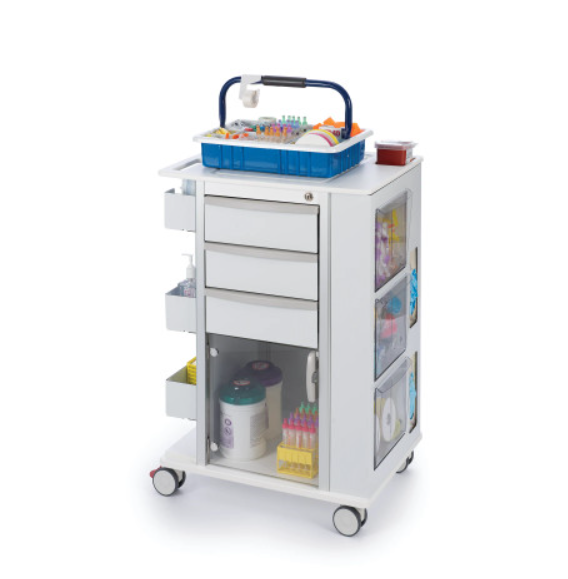In the realm of healthcare, certain tools play a pivotal role in improving the lives of individuals with various medical conditions or disabilities. These tools, known as durable medical equipment (DME), serve as essential aids in maintaining independence, mobility, and overall well-being. From wheelchairs and walkers to ventilators and hospital beds, DME encompasses a wide range of devices designed to support and enhance the quality of life for those in need. In this article, we'll explore the significance of durable medical equipment, its diverse applications, and the profound impact it has on individuals' lives.
What is Durable Medical Equipment?
Durable medical equipment refers to a broad category of medical devices and equipment that serve a therapeutic purpose and are intended for repeated use by patients in their homes or healthcare facilities. Unlike disposable medical supplies, such as bandages or syringes, DME is built to withstand repeated use over an extended period. Examples of durable medical equipment include:
- Mobility Aids: Wheelchairs, walkers, canes, and crutches provide support and assistance to individuals with mobility limitations, enabling them to move around independently and safely.
- Home Medical Equipment: Hospital beds, patient lifts, and bedside commodes are essential for individuals who require medical care or assistance with activities of daily living within their homes.
- Respiratory Devices: Ventilators, continuous positive airway pressure (CPAP) machines, and oxygen concentrators help individuals with respiratory conditions breathe more easily and efficiently.
- Orthopedic Devices: Braces, splints, and orthotic shoes provide support and stability for individuals with musculoskeletal injuries or conditions, helping to alleviate pain and prevent further damage.
- Assistive Devices: Hearing aids, prosthetic limbs, and communication devices empower individuals with sensory or physical impairments to communicate, hear, and engage more fully in daily activities.
The Importance of Durable Medical Equipment
Durable medical equipment plays a crucial role in enhancing the quality of life for individuals with disabilities, chronic illnesses, or injuries. Here are several ways in which DME contributes to improved health outcomes and overall well-being:
- Promotes Independence: By providing assistance with mobility, self-care, and daily tasks, DME enables individuals to maintain a greater degree of independence and autonomy in their lives. This independence fosters a sense of dignity, self-confidence, and empowerment.
- Facilitates Rehabilitation: Following an injury, surgery, or illness, DME such as orthopedic devices and physical therapy equipment can support the rehabilitation process, aiding in recovery, strength-building, and functional restoration.
- Enhances Safety: Mobility aids and home medical equipment help reduce the risk of falls, accidents, and injuries among individuals with mobility limitations or medical conditions, promoting a safer living environment.
- Improves Quality of Life: By alleviating pain, discomfort, and physical limitations, durable medical equipment enhances individuals' overall quality of life, allowing them to participate more fully in activities they enjoy and maintain social connections with friends and family.
- Supports Long-Term Care: For individuals with chronic conditions or disabilities requiring ongoing medical support, DME facilitates long-term care management, enabling them to age in place comfortably and safely within their homes.
Accessing Durable Medical Equipment
Access to durable medical equipment is essential for individuals in need of such devices to maintain their health and independence. However, navigating the process of obtaining DME can sometimes be challenging due to insurance coverage, cost considerations, and logistical issues. Here are some tips for accessing durable medical equipment:
- Consult Healthcare Professionals: Work closely with your healthcare provider, therapist, or case manager to assess your needs, determine the most appropriate DME for your condition, and obtain a prescription or recommendation for the equipment.
- Check Insurance Coverage: Contact your health insurance provider to verify coverage for durable medical equipment. Understand your policy's limitations, copayments, and requirements for obtaining prior authorization or documentation.
- Research Suppliers: Explore reputable suppliers or durable medical equipment providers in your area. Compare prices, product offerings, and customer reviews to ensure you're selecting a reliable and trustworthy supplier.
- Seek Financial Assistance: If you're facing financial barriers to accessing DME, inquire about available financial assistance programs, charitable organizations, or government assistance options that may provide support for purchasing or renting equipment.
- Ensure Proper Fit and Training: When receiving your durable medical equipment, ensure that it's properly fitted to your individual needs and specifications. Request training on how to use and maintain the equipment safely and effectively.
Conclusion
Durable medical equipment serves as a lifeline for millions of individuals worldwide, providing essential support, mobility, and independence in the face of medical challenges. From basic mobility aids to advanced respiratory devices, DME plays a critical role in enhancing the quality of life and promoting well-being for people of all ages and abilities. By recognizing the importance of durable medical equipment and advocating for improved access and affordability, we can ensure that individuals in need receive the essential tools and support they require to thrive and live life to the fullest.
For more details, visit us:
